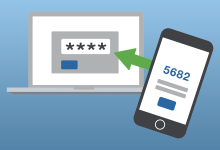Understanding the Difference: Capital One Checking Account vs Savings Account

Capital One is a renowned financial institution that offers a wide range of banking services to its customers. With a strong reputation for providing reliable and customer-friendly banking solutions, Capital One has become a popular choice for individuals looking for a trusted banking partner. In this article, we will explore the key differences between two of Capital One’s most popular offerings: the checking account and the savings account.
About Capital One
Capital One is a bank holding company headquartered in McLean, Virginia, with operations in the United States, Canada, the United Kingdom, and India. It offers a variety of financial products and services, including credit cards, personal loans, auto loans, home loans, and savings accounts.
Capital One was founded in 1994 by Richard Fairbank and Nigel Morris. The company began as a credit card issuer, and it quickly became one of the largest credit card issuers in the United States. In recent years, Capital One has expanded its product offerings to include other financial products and services. This bank is a publicly traded company, and its stock is listed on the New York Stock Exchange. The company’s stock ticker symbol is COF.
Here are some of the key facts about Capital One:
- Founded in 1994
- Headquartered in McLean, Virginia
- Total assets: $411 billion (2022)
- Total revenue: $16.7 billion (2022)
- Number of employees: 55,000+
- Products and services: Credit cards, personal loans, auto loans, home loans, savings accounts, investment products, and more
- Stock ticker symbol: COF
Capital One is a well-known and respected financial institution. It offers a wide range of financial products and services, and it has a strong track record of financial performance. If you are looking for a financial institution to do business with, Capital One is a good option to consider.
Here are some of the pros and cons of Capital One:
Pros:
- Wide range of financial products and services
- Strong track record of financial performance
- Competitive interest rates and fees
- Good customer service
Cons:
- Some products and services may be complex
- Not available in all countries
- May have high fees for some products and services
What is a Checking Account?
A checking account is a type of bank account that allows you to deposit and withdraw money on a regular basis. It is designed for everyday transactions such as paying bills, making purchases, and receiving direct deposits. With a Capital One checking account, you can access your funds easily through various channels, including ATMs, online banking, and mobile apps.
Features and Benefits of a Capital One Checking Account
One of the main features of a Capital One checking account is the ability to write checks. This provides you with a convenient way to make payments to merchants or individuals. Additionally, Capital One offers a wide network of ATMs where you can withdraw cash without incurring any fees.
Promoted contents:
Another benefit of having a Capital One checking account is the option to set up automatic bill payments. This feature allows you to schedule recurring payments for your bills, ensuring that they are paid on time every month. Furthermore, Capital One provides 24/7 customer support, allowing you to get assistance whenever you need it.
What is a Savings Account?
A savings account, on the other hand, is a type of bank account that is designed for storing money over a longer period of time. It is primarily used for saving money rather than conducting frequent transactions. With a Capital One savings account, you can earn interest on your deposited funds, helping your money grow over time.
Features and Benefits of a Capital One Savings Account
One of the main features of a Capital One savings account is the competitive interest rates offered. This means that your money will earn a higher return compared to a regular checking account. Additionally, Capital One provides the option to set up automatic transfers from your checking account to your savings account, making it easier to save money regularly.
Another benefit of having a Capital One savings account is the peace of mind it provides. Your funds are insured by the Federal Deposit Insurance Corporation (FDIC), which means that even if the bank were to fail, your money would still be protected up to the insured limit. This makes savings account a safe and reliable option for individuals looking to build their savings.
Key Differences Between a Checking Account vs Savings Account
Checking Account vs Savings Account, what is the difference? While both checking accounts and savings accounts are offered by Capital One, they serve different purposes and have distinct features. The key differences between the two are as follows:
- Usage: A checking account is intended for day-to-day transactions, whereas a savings account is meant for long-term saving and earning interest on your deposited funds.
- Access to Funds: With a checking account, you have easy and immediate access to your funds through various channels. On the other hand, a savings account may have limitations on the number of withdrawals you can make per month, encouraging you to save rather than spend.
- Interest Rates: While a checking account may offer little to no interest on your deposited funds, a savings account provides the opportunity to earn interest, helping your money grow over time.
- Fees: Capital One checking accounts may have certain fees associated with them, such as overdraft fees or monthly maintenance fees. However, savings accounts typically have fewer fees and may even waive them if certain conditions are met.
Choosing the Right Account for Your Needs
When deciding between a Capital One checking account and a savings account, it is important to consider your financial goals and banking needs. If you require frequent access to your funds and need the convenience of writing checks or making frequent transactions, a checking account may be the best option for you. On the other hand, if you are looking to save money over a longer period of time and want to earn interest on your deposited funds, a savings account would be a more suitable choice.
How to Open a Capital One Checking Account
Opening a Capital One checking account is a simple and straightforward process. You can choose to open an account online or visit a local branch to complete the application in person. To open an account, you will need to provide personal information such as your name, address, social security number, and employment information. Once your application is approved, you will receive your account details and can start using your Capital One checking account right away.
How to Open a Capital One Savings Account
Opening a Capital One savings account is also a hassle-free process. You can open an account online or visit a branch to complete the application in person. Similar to opening a checking account, you will need to provide personal information and complete the necessary paperwork. Once your application is approved, you will receive your account details and can start saving with your Capital One savings account.
Conclusion: Making the Right Financial Decision with Capital One
In conclusion, both Capital One checking accounts and savings accounts offer their own unique set of features and benefits. By understanding the differences between the two, you can make an informed decision based on your financial goals and banking needs. Whether you choose a checking account for everyday transactions or a savings account for long-term saving, Capital One provides reliable and customer-friendly banking solutions to help you achieve your financial objectives. Take the time to consider your options and open the account that best suits your needs with Capital One today.








